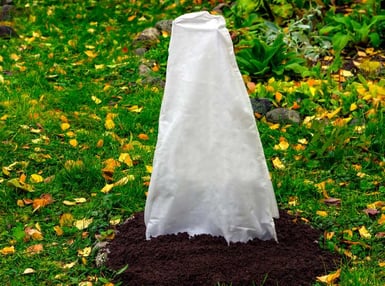
Home / Here on Earth / Winter Plant Protection in Florida
Plants become adaptable to a gradual decrease in temperature over the season. Sudden freezes after the season of warm weather usually do more damage to plants than a freeze at the time of cold weather. Most plant parts are able to adapt to cold, but some do not have a good cold tolerance.
In Florida, winter temperatures can get low enough to damage subtropical, tropical, and even at times temperate plants, especially if they are not adaptable to lesser temperatures. Protection, acclimatization, and appropriate post-freeze pruning can help your plants withstand a harsh winter season or a freezing spell.
Methods To Protect Plants In Winter

Plants in Containers
Ensure to shift plants that are in containers to protected spaces where heat can be trapped or supplied. If you want to keep containers outdoors, protect them with mulch and push them together to lessen heat loss through the container walls.
Mulching
During the night, heat diffuses from soil surfaces and is mostly lost to the atmosphere if it is not trapped. Decrease heat loss by diffusion and save plant roots by putting mulch around the plants. Regarding perennials, all that you need to protect is their root system.
Coverings
Coverings provide more protection from frost compared to excessive cold. Covers that do not touch plant foliage and stretch to the ground can decrease cold injuries by trapping heat. However, be attentive when using plastic as a cover since foliage that comes in contact with the plastic coverings is usually injured as the material takes heat apart from the plant.
Examples of coverings are quilts, cloth sheets, commercial frost cloths, or plastic. During a sunny day, remove plastic covers or give ventilation to prevent the air below the cover from heating up very much. You can place a light bulb below a cover to provide heat to ornamental plants.
Things To Do Before The Freeze
Planting Site Selection
While Florida has a general climate, your home landscape will also have its own microclimates—areas that are warmer or cooler, drier or wetter than surrounding areas. When you want to decide where to put cold-sensitive plants, consider microclimates. Refrain from planting fragile plants in a low area where cold air settles. Arrange fences, plantings, or other barriers to protect fragile plants from cold winds. Ensure the soil has good drainage because poorly drained soils lead to shallow, weak roots that are susceptible to cold injury.
Proper Plant Nutrition
Plants that are healthy and well-nourished will keep up with cold temperatures better and revive from injuries rapidly than other plants. Be cautious though as late fall fertilization can lead to an abundance of growth that is more vulnerable to cold injury.
Shade
During some freezes, tree covers can decrease cold injury. Areas beneath a tree canopy can get to a higher temperature overnight as the canopy traps heat diffusing from the ground. However, if you grow a plant that requires complete sun in the shade, it will be sparsely foliated, unhealthy, and not so tolerant of cold temperatures.
Windbreaks
Buildings, fences, adjacent plantings, and temporary coverings, can all act as windbreaks and save plants from cold winds. Windbreaks are especially useful at the time of radiative freezes, but cannot assist during radiational freezes.
Irrigation
Watering landscape plants before a freeze can help save plants. Wet soil will take up more heat during the day and emit it during the night. Remember that extended saturated soil conditions harm the root systems of the majority of plants.
Other Cultural Practices
Avoid early fall or late summer pruning, which can be responsible for an abundance of new growth that is more vulnerable to cold injury. Check plants routinely for pests and control as required since plants weakened by disease, nematode damage, or insect damage, are vulnerable to cold injury.
What To Do After The Freeze?
Watering
Following a freeze, especially on a sunny day, plants can lose water as the water in the container medium or soil is frozen. Watering the plants will provide them with water to assist in thawing the soil.
Pruning
Following a freeze, you can get rid of dead leaves once they turn brown. You must wait to do any serious pruning until new growth is seen. If the plant is pruned before there is new growth, then there is the risk of harming the plant even more.
At times cold injuries aren't as visible. For example, two symptoms of cold injury are an overall weak appearance and/or lack of spring bud break. The cambium layer beneath the bark will be brown or black if a branch is damaged on woody plants.
In most of Florida, freezes don’t occur too often, so Florida gardeners can still grow the subtropical and tropical plants that wouldn’t sustain in other states. However, this doesn’t mean freezes do not ever happen. Protect and prepare susceptible plants accordingly by following weather reports before freezes harm them by surprise.
Contact Down To Earth today for more information on cold-hardy plant varieties, winter plant protection, and other winter landscaping questions.
